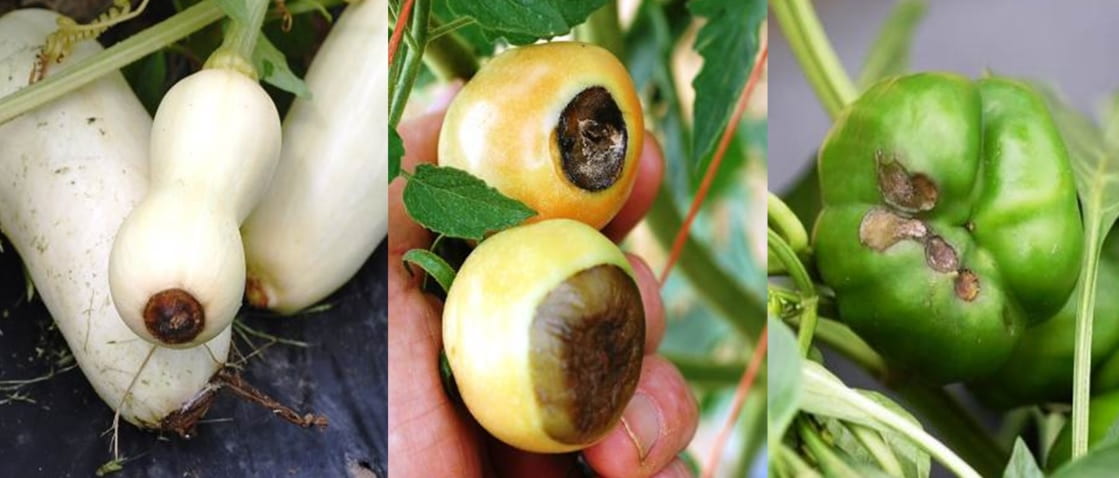Blossom End Rot Common so Far this Season.
By Jerry Brust, UME
This summer has been unusual as it has been about normal for temperatures if not a little cooler, but we have had greatly varying amounts of rainfall over the last month. Some areas have remained dry with storms just missing farms while others have been hit with some heavy rains. This can make watering vegetables challenging to avoid problems such as blossom end rot, which is caused by a calcium deficit in the developing fruit.

Calcium (Ca) moves to the plant via mass flow, i.e., where dissolved minerals like calcium move to the root in soil water that is flowing towards the roots. As it passes through the plant Ca is deposited in tiny amounts into the fruit. If anything slows or interrupts this stream the tiny amount of Ca needed at that moment is not deposited and the area furthest from the top of the fruit suffers—resulting in blossom end rot (BER). I have seen more BER this year on a large number of different vegetables than I have in the past several years (fig 1).
Figure two shows how precise and constant the Ca flow in a plant has to be to supply just the right amount of Ca at the right time. The large fruit on this particular plant developed before there was a Ca interruption, but the fruit a little younger suffered a Ca interruption, with the smallest (youngest) fruit suffering the greatest Ca interruption. At the time it was taken tissue analysis from this same plant showed that calcium was in the moderate range when the blossom end rot took place, demonstrating the importance of irrigation and water supply to reduce blossom end rot. Not much you can do about no rains or heavy rains, except try to maintain as even a water supply to your vegetables as is possible and remove any fruit from the plant you find that has blossom end rot.

